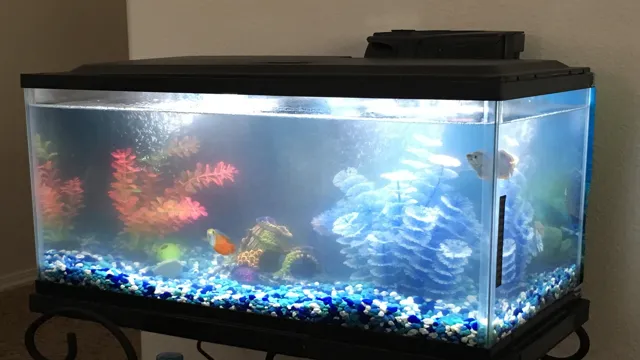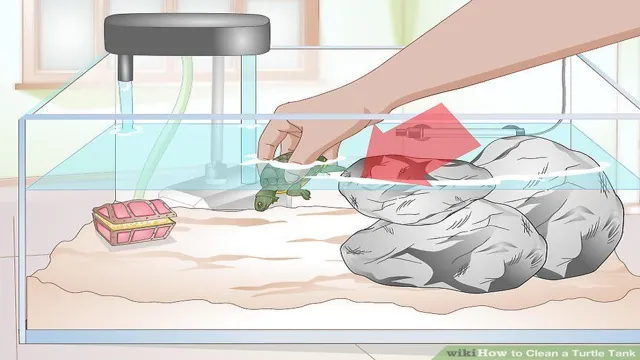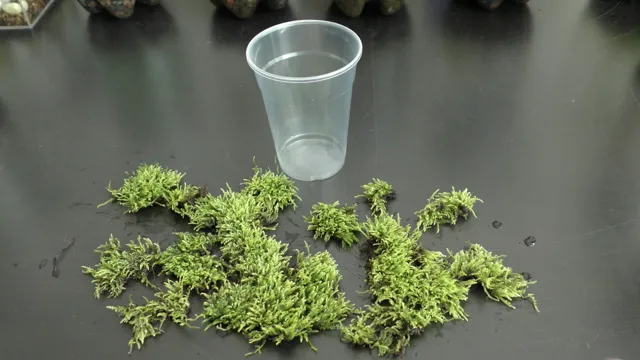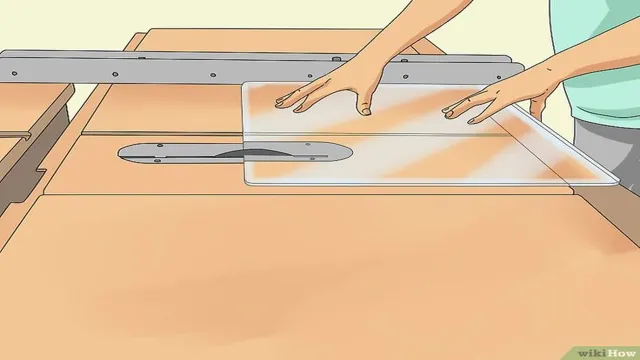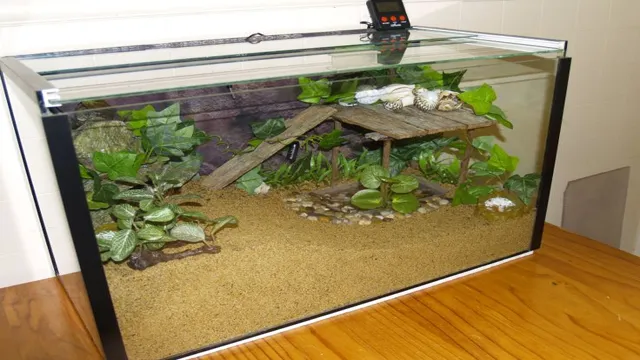Are you an aquarium owner struggling with cloudy and murky water in your aquarium? Maintaining fish tanks is not a simple task, and one of the most common issues that fish keepers encounter is cloudy water. This problem can quickly get out of hand and affect the health and well-being of your fish. That’s why it’s essential to know how to clear your water aquarium and keep your fish happy and healthy.
In this blog, we’ll guide you through the process of maintaining a clear aquarium and provide you with all the tips and tricks you need to know to prevent murky water in the future. So, let’s dive in!
Understanding Cloudy Water
If you’re an aquarium owner, you may have experienced cloudy water at some point. Not only can it look unsightly, but it can also be harmful to your fish and other aquatic inhabitants. Fortunately, there are several ways to clear up your aquarium water and keep it crystal clear.
One of the first things to consider is the cause of the cloudiness. It may be due to overfeeding, overstocking, or lack of regular water changes. Once you have identified the cause, you can take steps to address it.
For example, you can cut back on feeding, reduce the number of fish in the tank, or increase the frequency of water changes. Another option is to use a water clarifier, which works by coagulating the particles that cause cloudiness and allowing them to be removed by your filter. Regardless of the method you choose, be sure to monitor your aquarium regularly to prevent cloudiness from returning.
With a little effort, you can enjoy a clear and healthy aquatic environment for your fish to thrive in.
What Causes Cloudy Water
Cloudy water in your aquarium can be caused by a number of factors, such as overfeeding, poor filtration, excess waste, and lack of maintenance. It can also be a sign of an imbalance in the tank’s chemistry, such as high levels of ammonia or nitrate. When left untreated, cloudy water can harm the health of your aquatic pets, causing stress and disease.
To prevent cloudy water, it’s important to maintain a regular cleaning schedule, monitor the tank’s chemical balance, and avoid overfeeding your fish. A good filtration system can also help to keep the water clear and free of debris. If you do notice cloudy water, be sure to test the water and take appropriate steps to correct any imbalances.
By keeping a close eye on your tank and providing it with the necessary care, you can help ensure your aquatic pets are healthy and happy.

Types of Cloudy Water
Cloudy water can be a common issue in aquariums, and understanding the different types of cloudy water can help you identify and address the problem quickly. One type of cloudy water is caused by excess waste and uneaten food in the tank. This is often referred to as “organic cloudiness” and can be addressed by performing regular water changes and maintaining a clean tank.
Another type of cloudy water is caused by a bacterial bloom, which occurs when the good bacteria in your tank suddenly dies off, causing an overgrowth of harmful bacteria. In this case, adding a bacterial supplement can help restore balance to your tank. Finally, there may be a mineral or chemical imbalance in your water, which can lead to “chemical cloudiness.
” Performing regular water tests and adjusting the levels of chemicals in your tank can help address this issue. By understanding the different types of cloudy water and their causes, you can keep your aquarium clear and healthy for your fish.
Removing Cloudiness from the Water
If you’re an aquarium owner, one of the most frustrating problems you may encounter is cloudiness in your tank. Fortunately, there are steps you can take to clear up the water and keep your fish happy and healthy. One of the first things to check is your filtration system – make sure it’s working properly and that you’re cleaning it regularly. (See Also: How to Get a Glass Background Off a Aquarium: Simple Steps for Removing Aquarium Decals)
Another possible cause of cloudiness could be overfeeding or overcrowding your aquarium. Be sure to feed your fish the appropriate amount and ensure that you’re not keeping too many in one tank. Another solution for clearing up cloudy water is using a water clarifier or flocculant.
These products work by removing particles from the water, but you should make sure to follow the instructions carefully and don’t overuse them. Other effective methods to improve water clarity include regular water changes and the use of aquarium plants. Finally, make sure to avoid using too many chemicals or treatments in your aquarium, as this can create imbalances in the water chemistry that can lead to even more problems down the line.
By taking these steps, you’ll be well on your way to a crystal-clear aquarium that your fish will love.
Water Changes
When it comes to maintaining a healthy aquarium environment, regular water changes are the key. One problem that many aquarium owners encounter is cloudy or murky water. This can be caused by a variety of factors, including excess waste build-up or the presence of too many organic compounds in the water.
To remove cloudiness from the water, start by removing any debris or uneaten food from the tank. Next, perform a partial water change, removing around 20-30% of the water and replacing it with fresh, clean water. Be sure to treat the new water with a water conditioner to remove any chlorine or other harmful chemicals.
Additionally, consider using a water clarifier, which will bind together small particles that cause cloudiness and allow them to be easily removed by the filter. With regular water changes and proper maintenance, you can achieve crystal-clear water in your aquarium and ensure the health of your fish and other aquatic inhabitants.
Cleaning the Gravel
When it comes to keeping aquariums clean, one of the most important tasks is cleaning the gravel. Over time, fish waste and uneaten food can accumulate in the gravel, leading to cloudy or murky water. To tackle this problem, it’s crucial to vacuum the gravel regularly.
A gravel vacuum works by siphoning out dirty water and debris from the bottom of the tank, leaving you with fresh, clean water. To use a gravel vacuum, simply place the vacuum into the water and shake it gently up and down. This will create suction that will draw water and debris out of the gravel.
Be sure to move the vacuum around the entire tank to make sure you get all the dirty spots, and make sure you don’t vacuum up any fish or plants! It’s also important to change the water in your aquarium regularly to keep it clean and healthy. Aim to change out about 20% of the water every 1-2 weeks. This will help remove excess nutrients and keep the water chemistry in balance.
By staying on top of regular maintenance, you can help ensure that your fish stay healthy and happy in their home.
Using a Filter
If you want to enjoy crystal-clear water in your pool or aquarium, using a filter is a smart choice. Filters are designed to remove contaminants from the water, including cloudiness that can be caused by debris and other impurities. The filter works by trapping particles as the water flows through it, leaving behind clear and clean water for you to enjoy.
There are many different types of filters available for different applications, such as sand filters, cartridge filters, and diatomaceous earth filters. Choosing the right filter for your needs can depend on several factors, such as the size of your pool or aquarium, the amount of usage, and your budget. However, investing in a high-quality filter can make a big difference in the clarity and quality of your water, so it’s definitely worth considering. (See Also: How to Breed Fish in My Aquarium: A Beginner’s Guide to Successful Reproduction)
With the right filter, you can enjoy crystal-clear and refreshing water all year round, without the hassle of cloudiness and other contaminants.
Prevention Strategies
One of the best ways to prevent the buildup of algae and other debris in your water aquarium is by employing proper maintenance strategies. This includes monitoring the pH and temperature levels of your water aquarium, as well as regularly performing partial water changes to remove any unwanted debris. Additionally, reducing the amount of light that your aquarium receives can also help prevent algae growth.
You can limit the amount of time your aquarium receives direct sunlight by filtering it through a shade or by using aquarium covers. Furthermore, adding live plants to your aquarium can also help to naturally control the level of toxins in the water. By practicing these prevention strategies, you can maintain a healthy and clear water aquarium for your fish and other aquatic life.
Maintaining Water Quality
As the world’s population grows, our water resources are more stressed than ever before. Maintaining water quality is critical to public health and the environment. One effective strategy for preserving water quality is prevention.
By preventing pollution from entering our waterways, we can avoid the costly and difficult task of cleaning up contaminated water. This means taking precautions like properly disposing of hazardous waste, not dumping chemicals or oil in storm drains, and using environmentally friendly products whenever possible. Prevention can also involve green infrastructure, such as rain gardens and green roofs, that help absorb rainwater and filter pollutants before they enter the water supply.
By being mindful of our daily actions and taking steps to prevent pollution, we can help maintain clean and healthy water resources for ourselves and future generations.
Feeding Properly & Reducing Overcrowding
When it comes to preventing overcrowding and ensuring that your pets are healthy and happy, there are a few strategies that can really make a difference. One of the most important things you can do is to feed your pets properly. Make sure they are getting a balanced diet that includes all the nutrients they need to thrive.
Additionally, avoid overfeeding and try to keep your pets at a healthy weight. Overfeeding can lead to weight gain and other health problems, which can worsen overcrowding issues. Another key strategy is to reduce overcrowding itself.
This might mean keeping fewer pets, or finding ways to expand your living space or create specialized areas for your pets. Overall, by taking these steps, you can help your pets stay healthy, happy, and comfortable, while also preventing overcrowding and other problems.
Wrapping Up
In conclusion, clearing up a cloudy aquarium can be a daunting task, but it’s not impossible. The key is understanding the root cause of the cloudiness and taking the necessary steps to address it. Regular maintenance, such as testing the water quality and cleaning the filter, is crucial to maintaining a healthy aquatic environment.
Additionally, controlling the feeding of your fish and avoiding overstocking can help reduce the buildup of waste and algae. Remember to be patient and consistent with your efforts, as it may take several weeks to see noticeable improvement. With these tips and a little bit of elbow grease, you’ll be able to enjoy a crystal-clear aquarium and happy, healthy fish.
So, take the plunge and get started on giving your aquarium a fresh, clean look today! (See Also: How to Get Rid of Green Water in Planted Aquarium: Tips and Tricks)
Conclusion
In summary, keeping your aquarium clean and clear requires a bit of effort, but it’s definitely worth it. Just remember to regularly perform water changes, clean the substrate and decorations, and keep an eye on your filtration system. And if all else fails, just call your local mermaid cleaning service.
Not only will your fish thank you for it, but you’ll also have a sparkling clean and peaceful underwater oasis to enjoy.”
FAQs
How often should I clean my water aquarium?
It’s recommended to clean your aquarium every two weeks, but it can vary depending on the size of the tank and the number of fish.
What tools do I need to clear my water aquarium?
To clear your water aquarium, you will need a net, a siphon hose, a bucket, and a cleaning sponge.
How much water should I change when cleaning my aquarium?
You should change at least 25% of the water every time you clean your aquarium. However, it’s best to change more if the water is particularly dirty.
Can tap water be used to fill my aquarium?
It’s important to treat tap water with a dechlorinating agent before using it to fill your aquarium. Chlorine and other chemicals in tap water can be harmful to the fish.
How can I prevent algae growth in my aquarium?
Algae growth can be prevented by reducing the amount of light that shines on the tank, limiting the amount of food given to the fish, and keeping the aquarium clean.
What temperature should the water in my aquarium be?
The ideal temperature for most fish is between 75-80 degrees Fahrenheit. However, some species may require a slightly different temperature range.
How do I know if the water in my aquarium is safe for my fish?
You can use a water testing kit to check the levels of ammonia, nitrate, and pH in your aquarium. If these levels are too high, it can be harmful to your fish and you should take steps to correct the problem.

